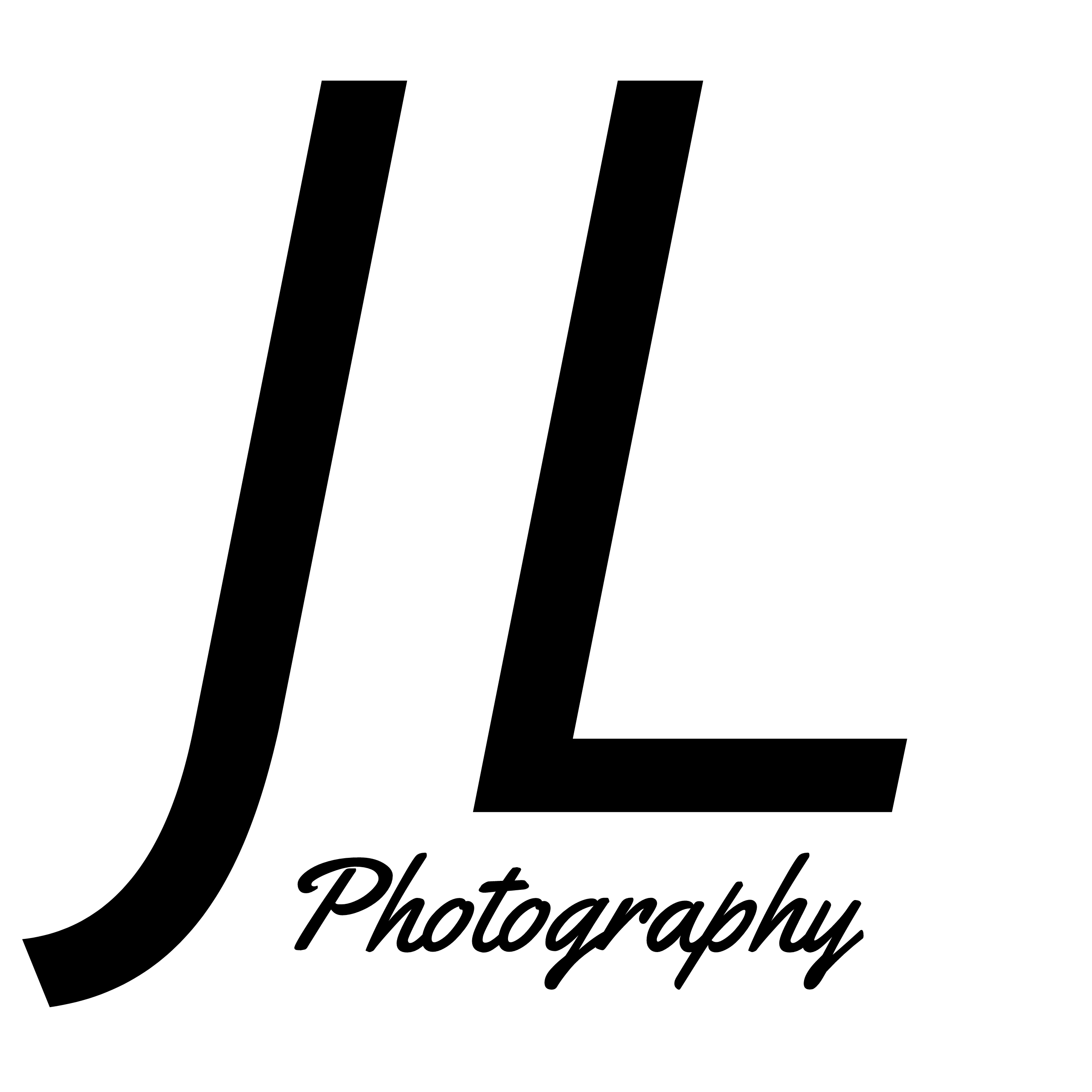This time was dedicated to looking at images that are layered in one way or another. I have looked at two main sources of inspiration:
Damien Blottiere
Because of an interest in images, Blottiere first worked as a fashion editor, until he decided to devote himself to his photography and collage work. Blottiere gathers images and composes them by hand. This creates "organically shaped collages with a surrealist language that function as an open window into the world of fantasy". He has worked with many collaborators and brands that include Pierre Hardy, Louis Vuitton as well as a long list of high profile international periodicals.
Here are some examples of his work:
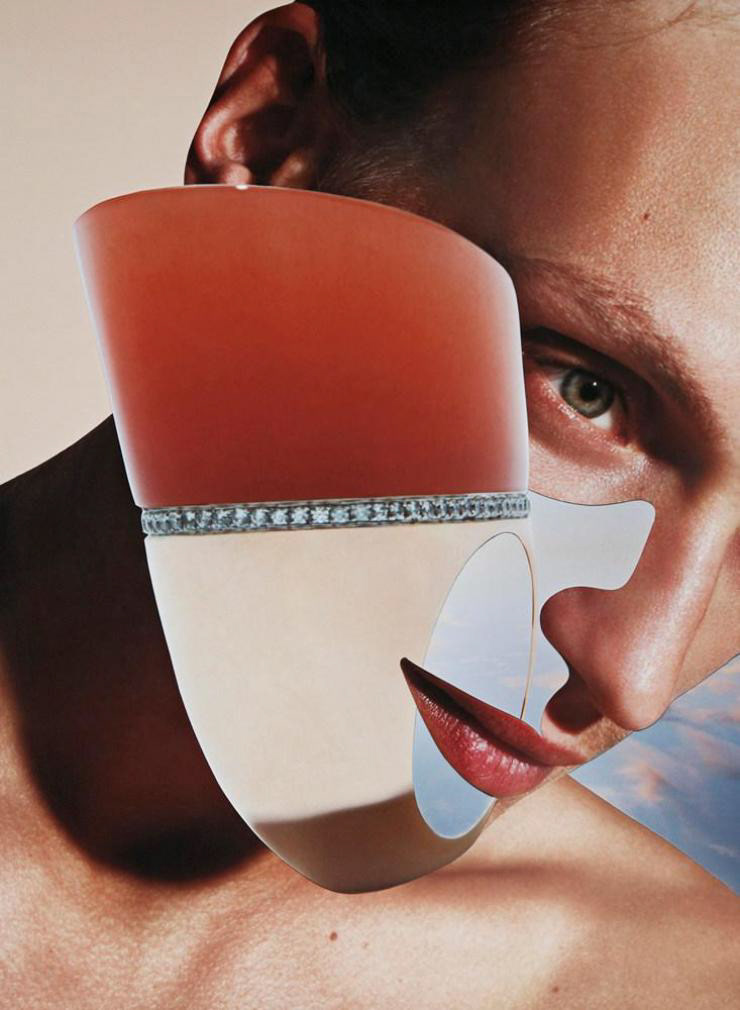
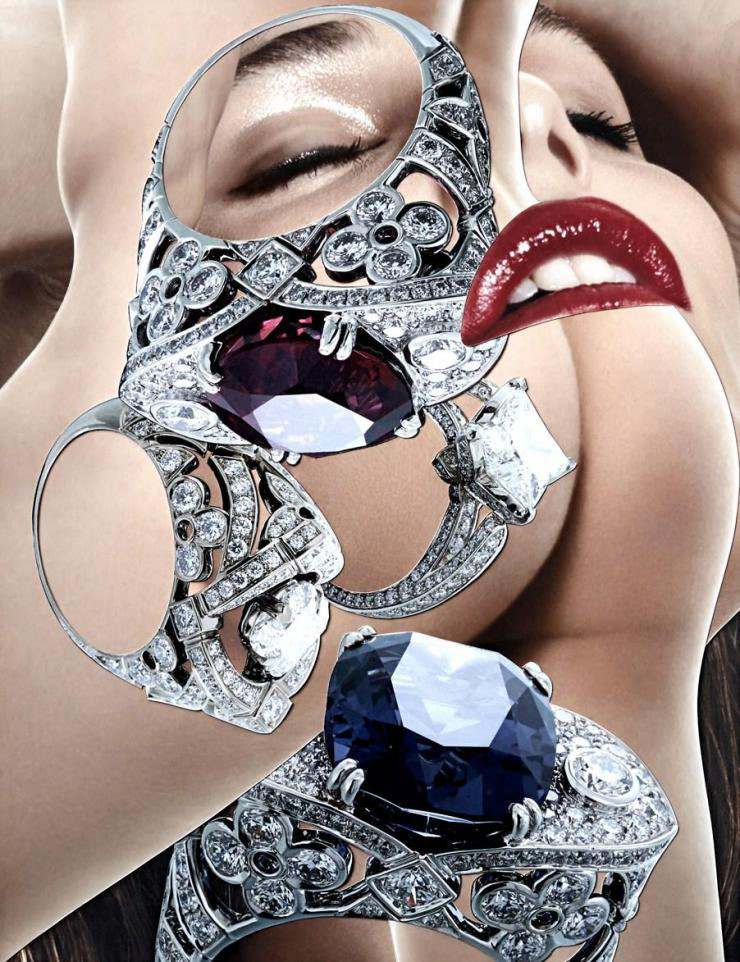
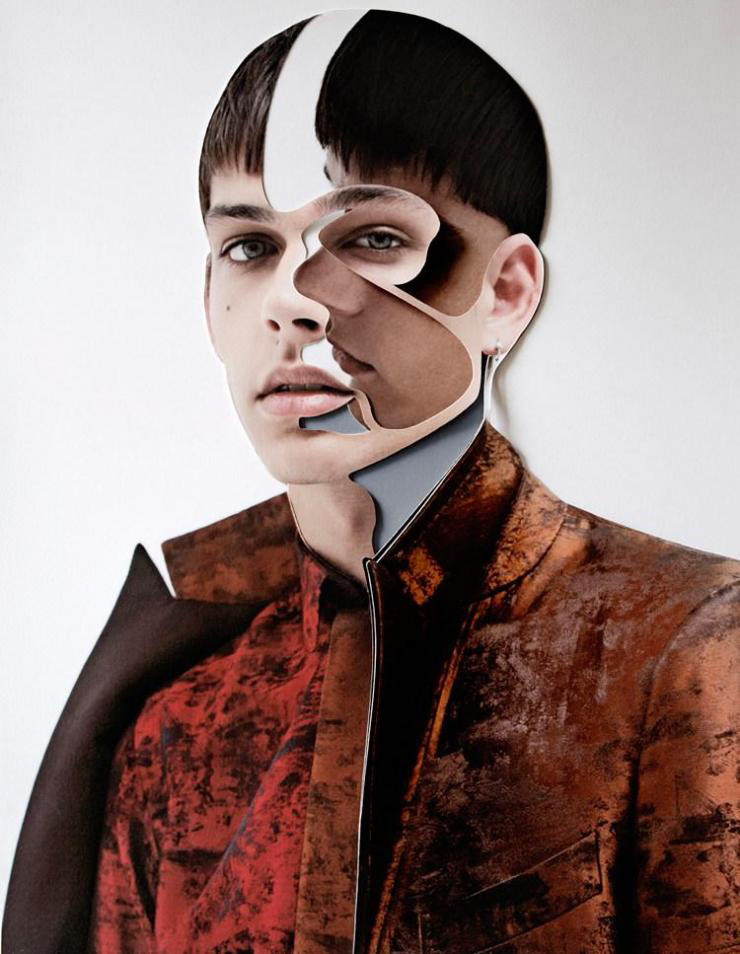



It is clear how abstract they are, but also impressive how the smooth, deliberate lines make the image very easy to digest visually, giving each portion of the image a very clear outline. I guess in a broad sense, they show a reflection of the different aspects/parts of the human body asking questions about how we see ourselves and others. Do we just define a person by their body and the sum of its parts.
This style of imagery is very much based on physically breaking down the images and sticking them back together. For my own project, I would prefer to blend images together, rather than produce something this bold.
David Samuel Stern
Stern is a photographer who has used a particular technique for a series of images. To create these he takes several photographs of a person at different angles before weaving them together. According to Stern's website, they are an attempt to bridge dignified, direct portraits with a sort of abstraction that allows their subjects to hide within themselves, and the photographs to be distinctly physical objects. In hiding some things, we reveal others.
Here are some examples of his work:
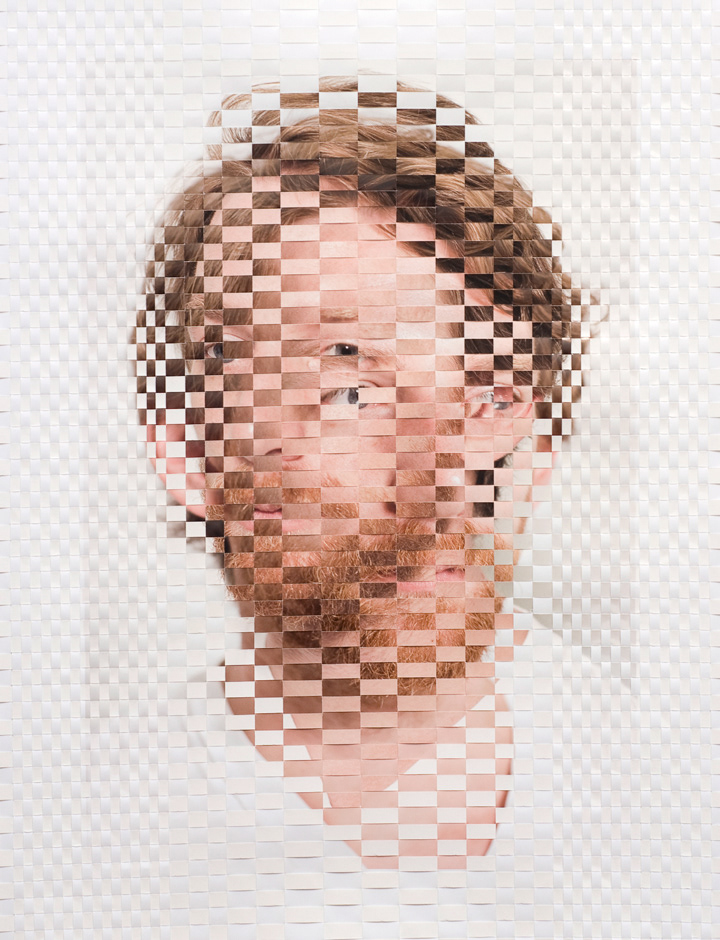
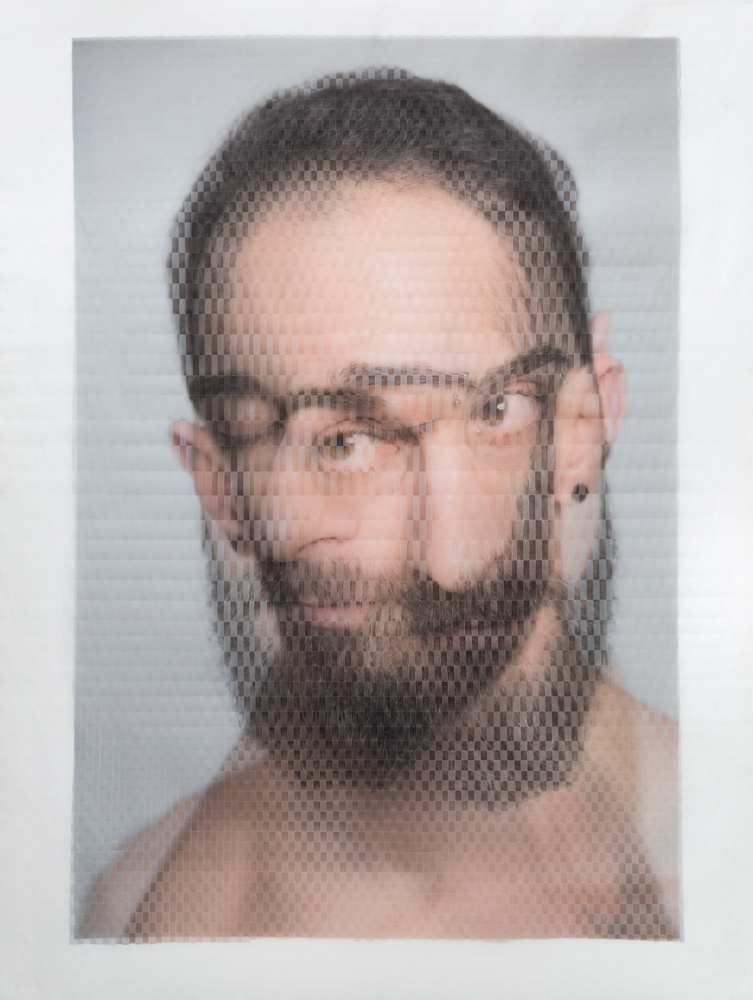
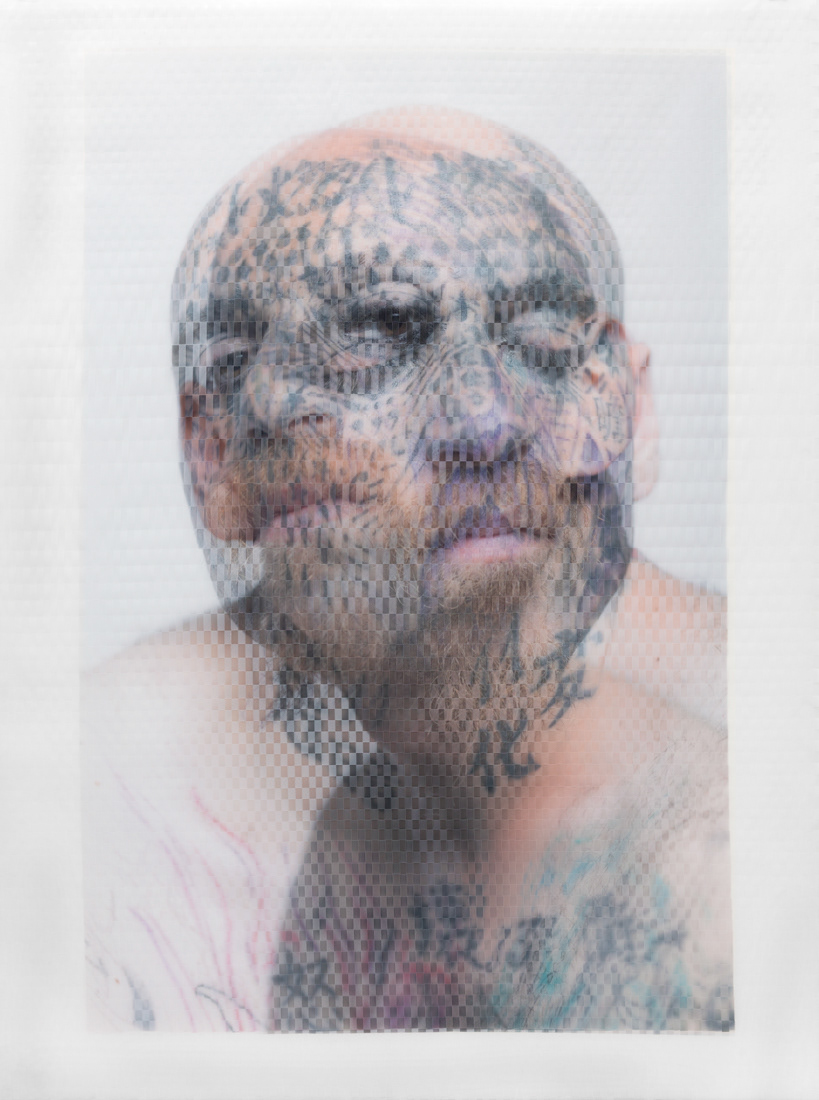

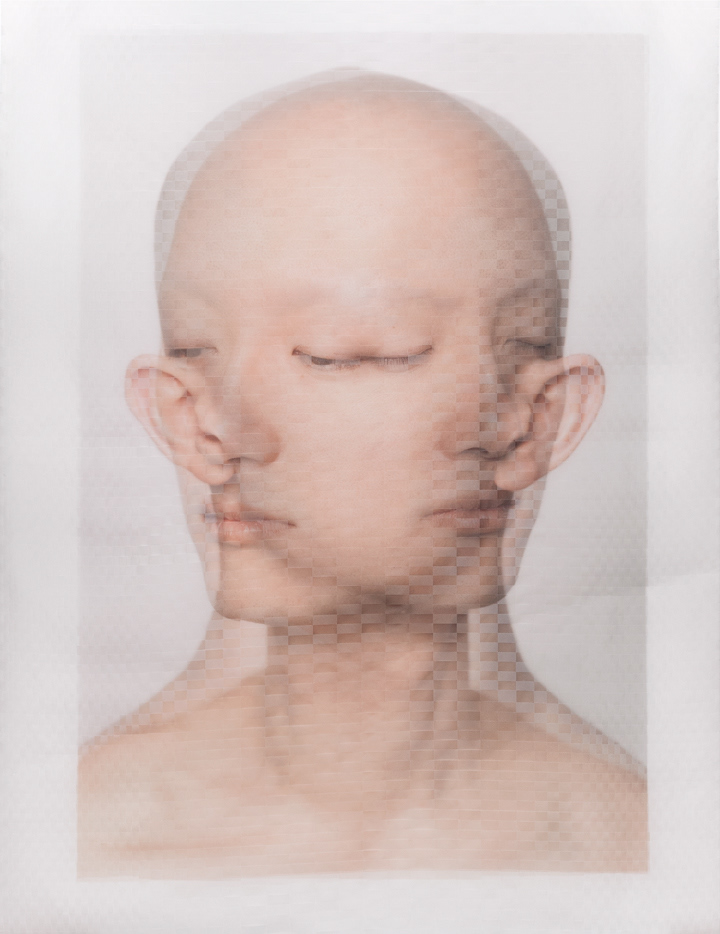
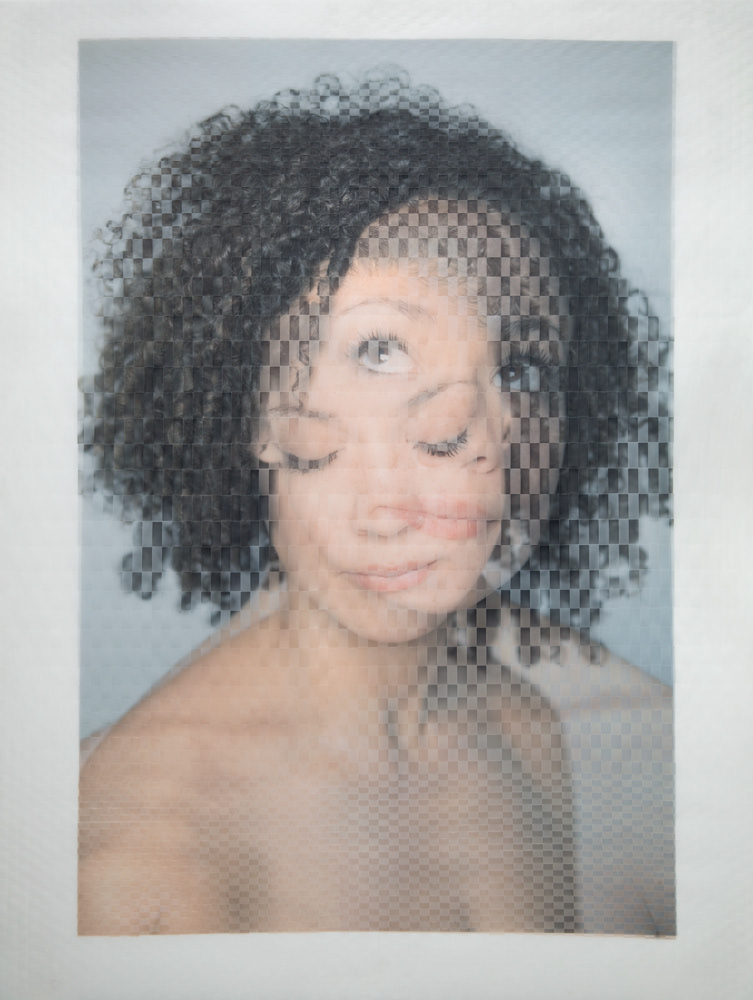
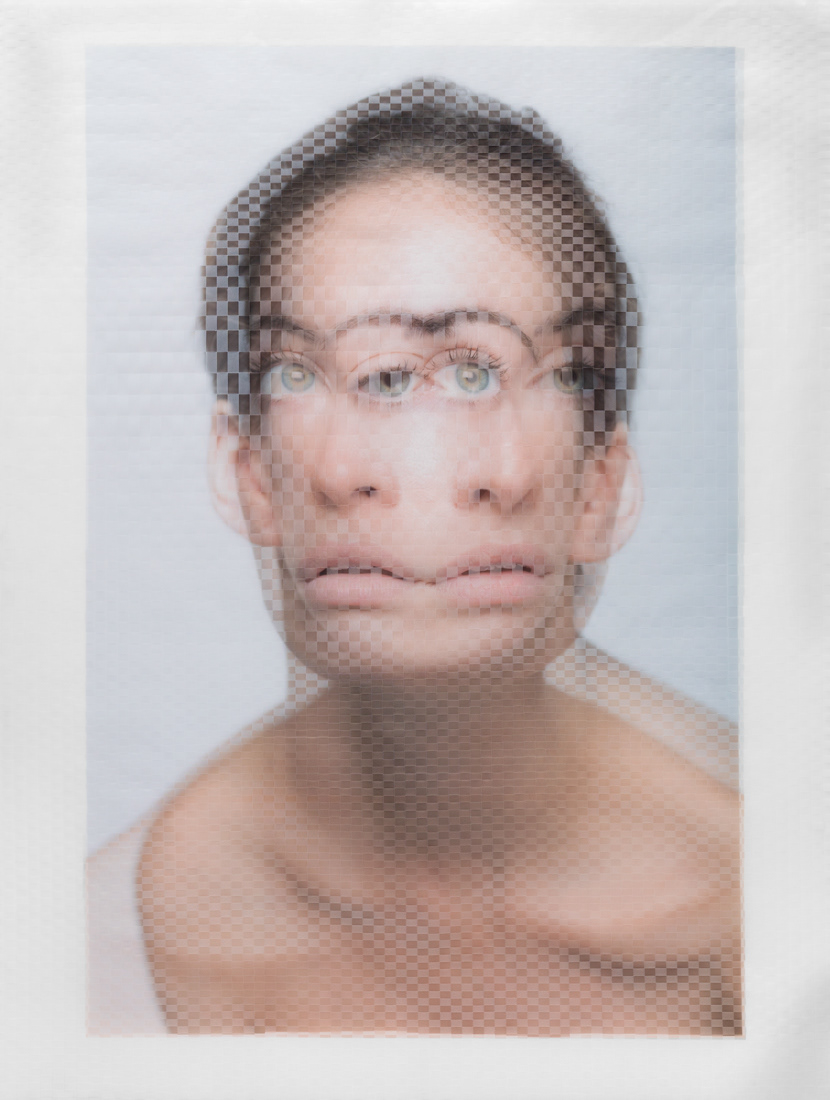

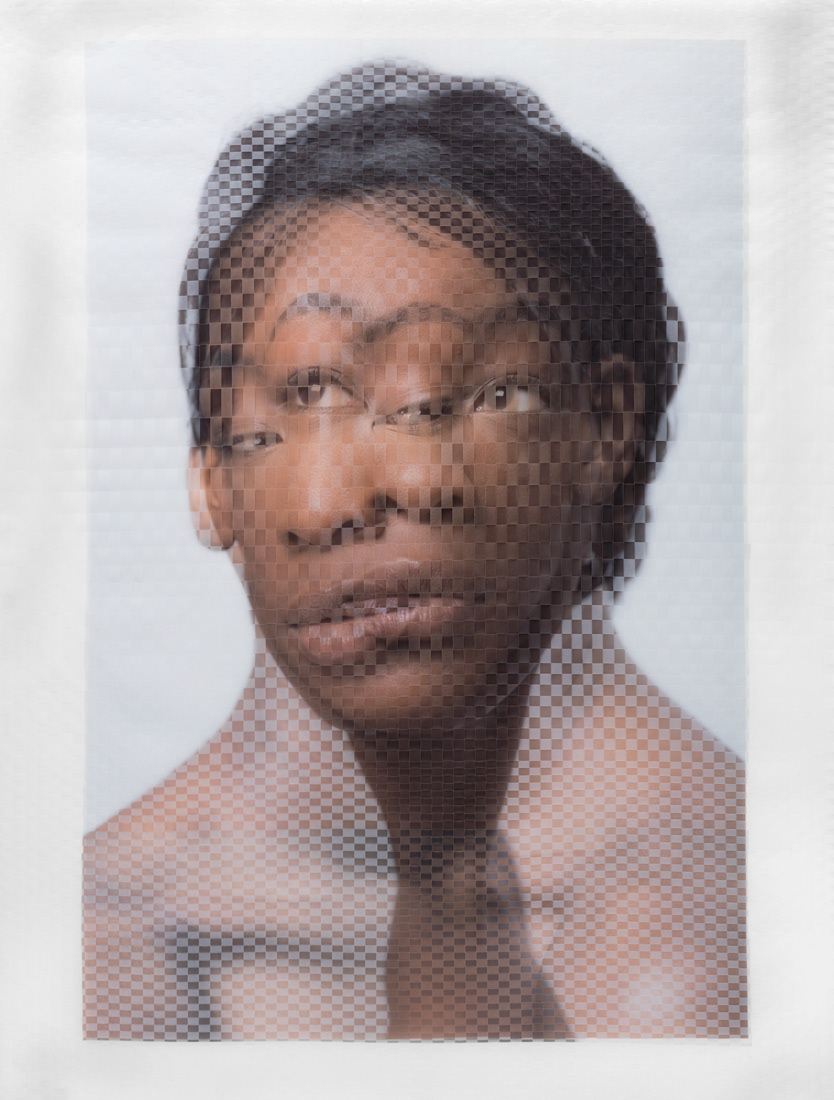
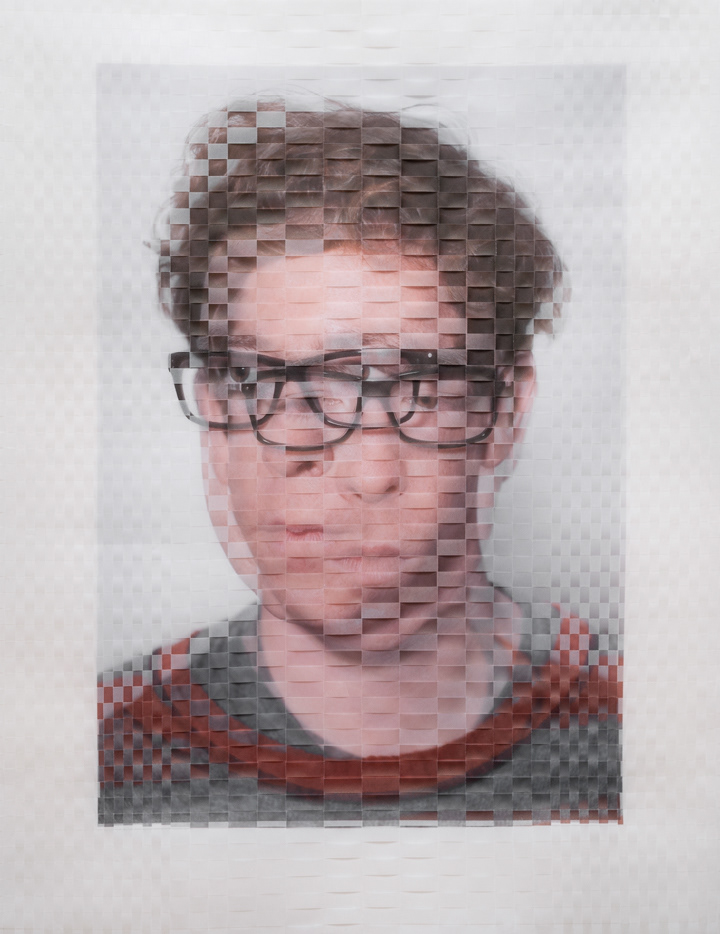
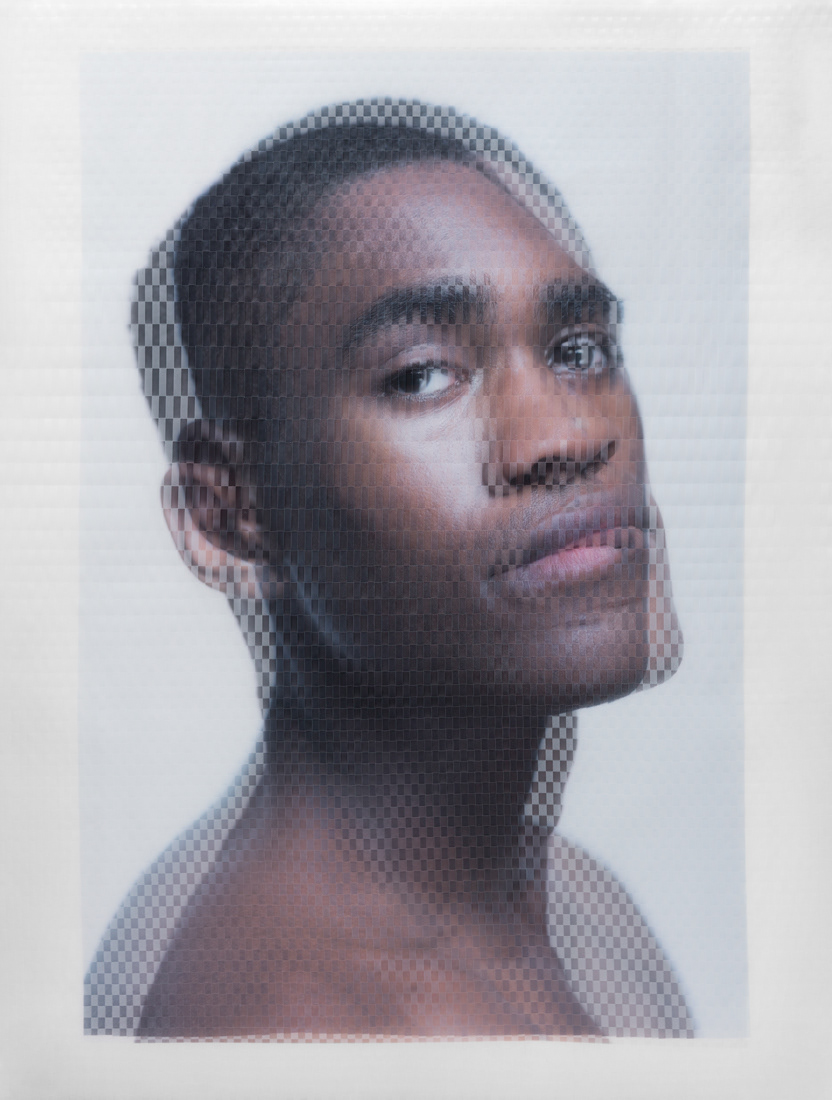

To benefit my project and its development I have attempted to create my own version of one of Sterns images, in its most basic form.
To do this I have simply used two images that have a subtle difference, but which are taken with a short gap in between. With these images I have printed them both on A4 paper and then begun to cut them into strips, 1 cm in width, that can be woven together.
One of the images I cut the strips in a horizontal fashion and the other in a vertical fashion. For the image that I cut horizontally I did not cut directly from edge to edge, but instead leaving a gap on each side that meant that all the strips would stay attached together. This meant for the first image, cut vertically, I could simply weave each individual strip into the second.
Once this was done I glued the woven image onto a piece of black backing card to give it support and structure.
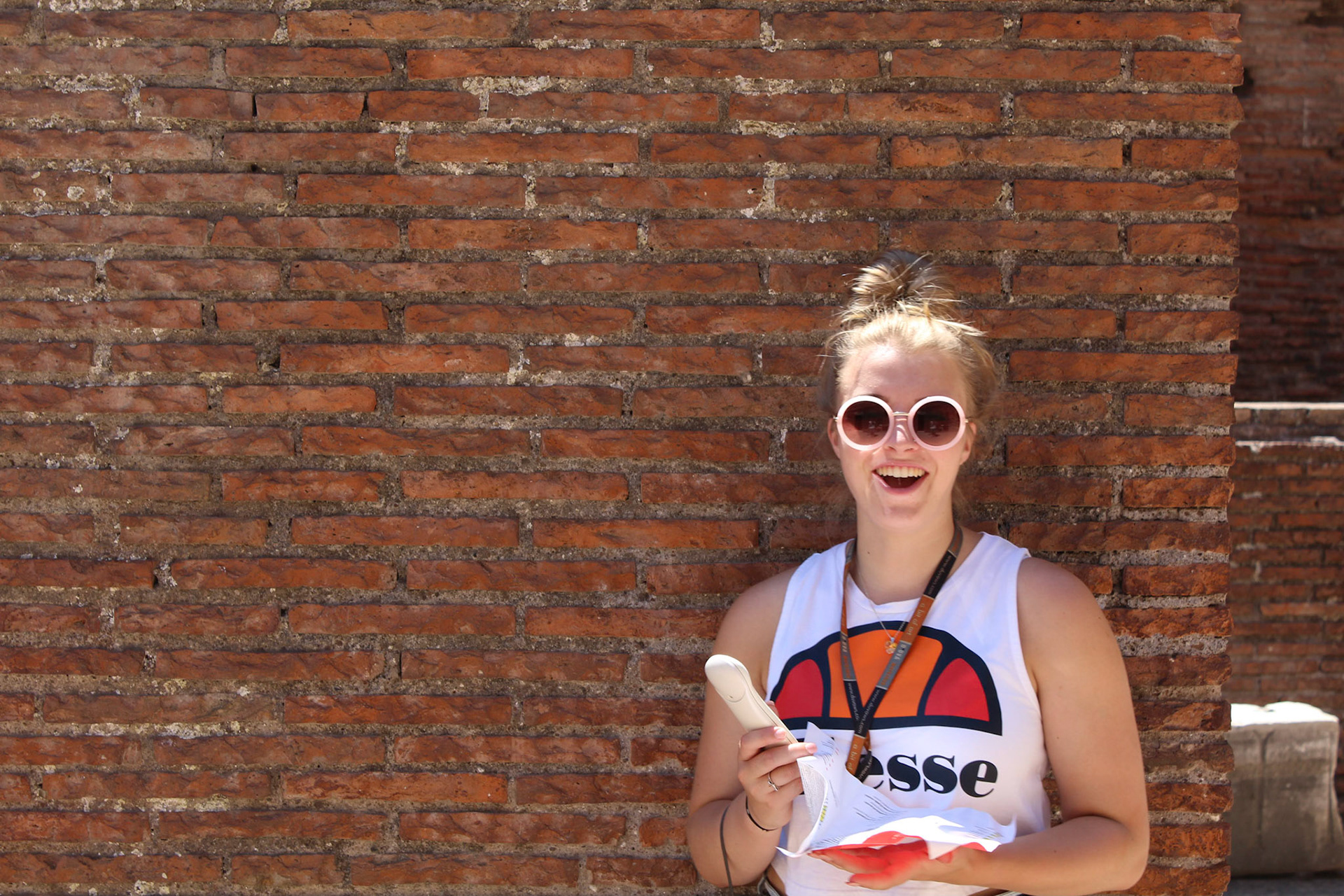
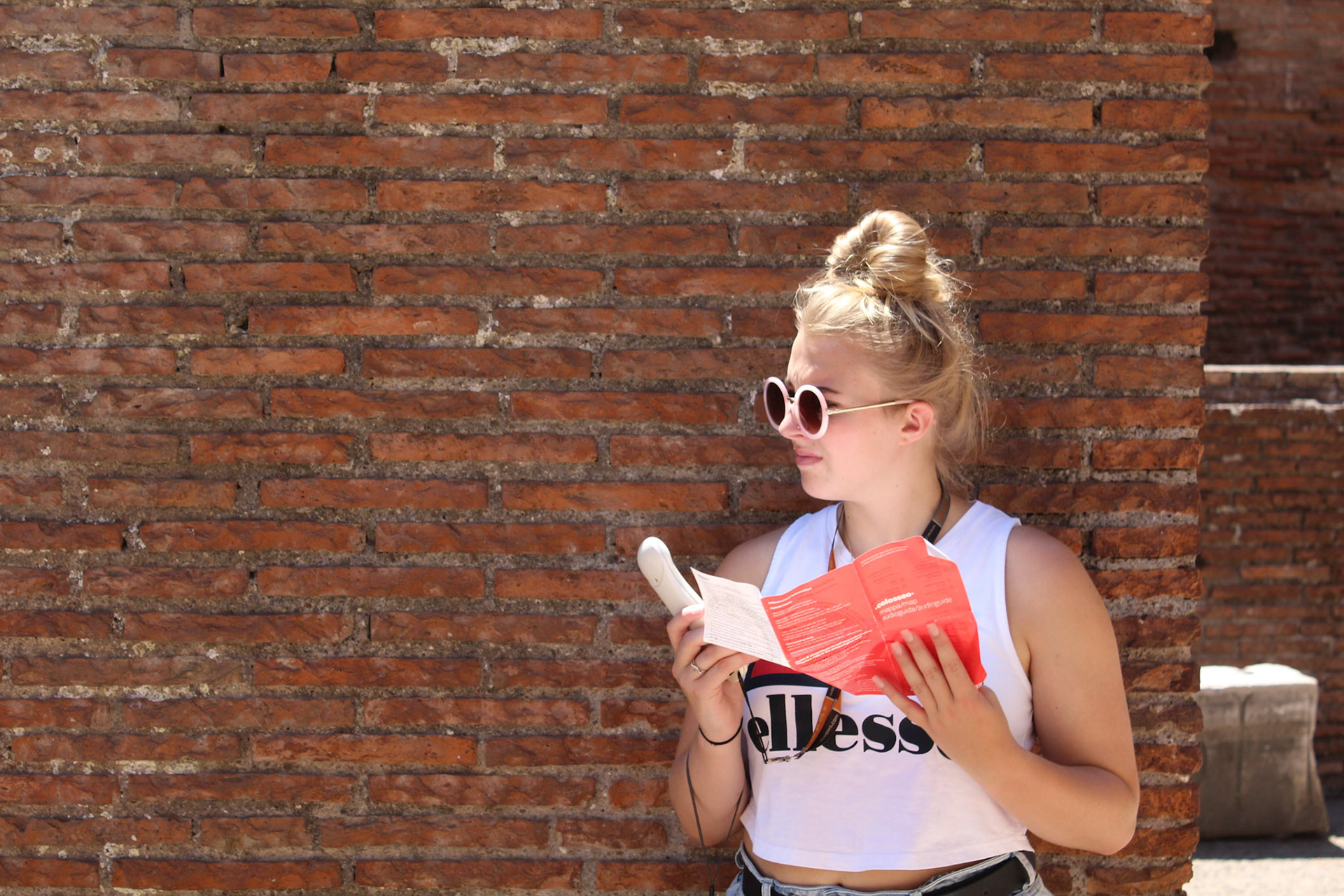
This is what it came out looking like, with the starting images as a reference.
In hindsight I would have cropped both of the images to focus more on the subject so that the face is not as blurred out by the weave as it has been. Another way of combating this would have been to cut the strips thinner than 1 cm, to produce a tighter weave. However, I like how the bricks become indistinguishable by merging them together like this. You can see in Stern's images that he has experimented diversely with the thickness of the strips he has used in each piece.
I particularly like the idea of having a final piece that is very much an object with presence and texture as it is a straightforward image.
References
Samuel Stern, D. (2017). home. [online] david samuel stern. Available at: http://davidsamuelstern.com/ [Accessed 23 Nov. 2017].
--ADD Damien Blottiere REFERENCE--
